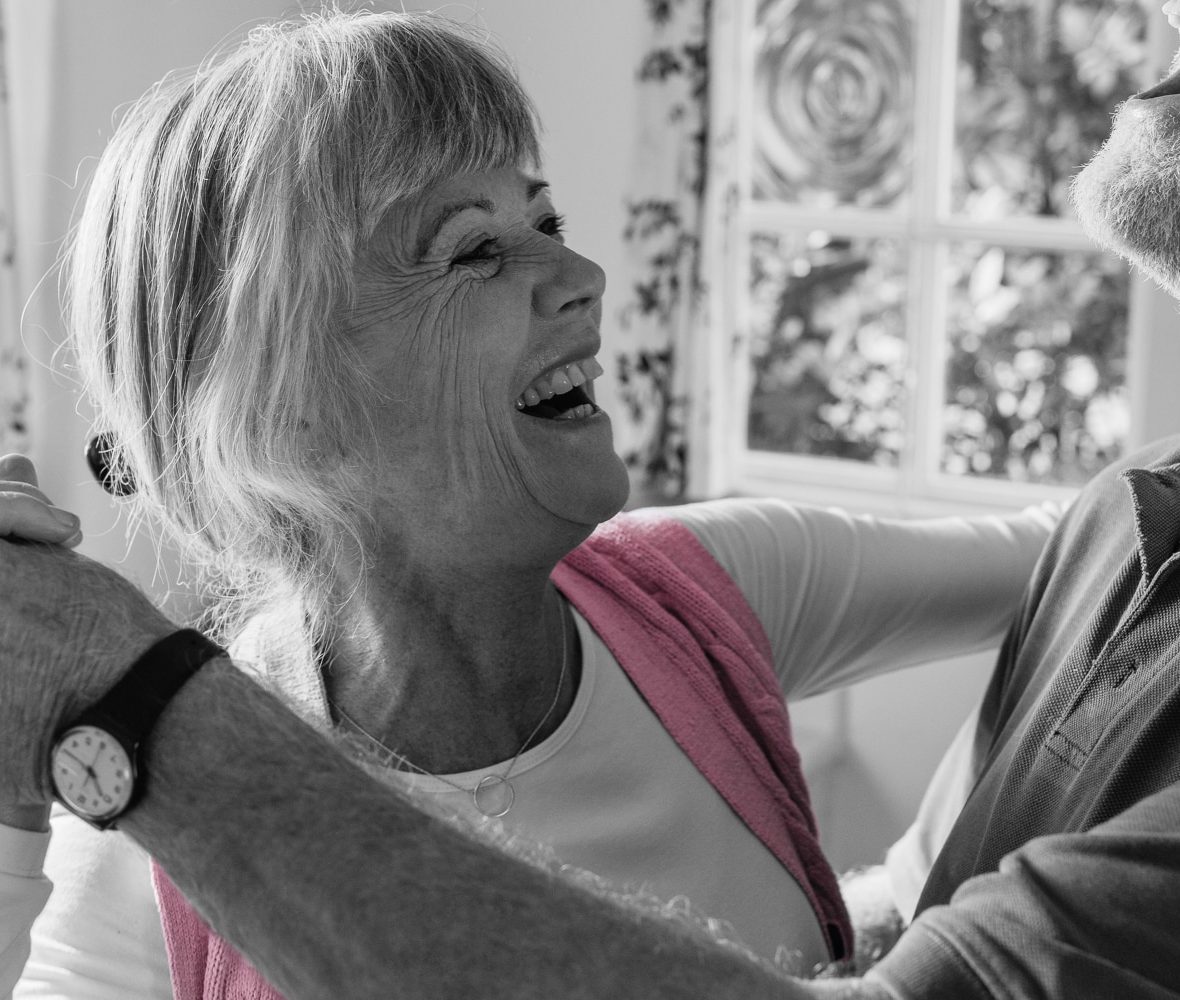Stroke Symptoms, Causes and Risk Factors
Stroke is a condition that many Australians will know of but very few truly understand the catastrophic impact it can have on a person’s life. Recognising what a stroke is, how to react in the event of one, and how to prevent it in the first place, could mean the difference between life and death in the future.
In this short guide, we explore some of the causes, warning signs and management of a stroke, listed as one of 38 listed medical conditions under NobleOak Trauma Insurance. Of course, this information is provided as a guide only and it’s not a substitute for consulting your medical practitioner.
Stroke statistics in Australia
A stroke is an incredibly serious condition. Aside from being one of the leading causes of death in Australia, the debilitating factors that come in the wake of a stroke can take a terrible toll on the sufferer, and on those who are left with the prospect of caring for them.
On the positive side, there have been great advances in the treatment of a stroke in recent years. There is also a lot of useful information about this topic online.
- Stroke kills more women than breast cancer and more men than prostate cancer (1)
- In 2017 there were more than 56,000 new and recurrent strokes – that equates to one stroke every nine minutes
- The number of people living with the effects of a stroke is predicted to increase to one million by 2050
- Stroke is one of Australia’s biggest killers and a leading cause of disability
- Roughly 80% of strokes are preventable
Stroke is also the third leading cause of death for women and the fifth leading cause of death in men, in league with a heart attack and dementia as lethal health events that can strike adults at any age.
What causes a stroke?
A stroke is caused by a blocked artery (ischemic stroke) or by the leaking or bursting of a blood vessel (hemorrhagic stroke). In some of the luckier cases, the disruption of the blood flow to the brain is only temporary (transient ischemic attack) and no permanent damage is caused to the brain.
It is essential for stroke sufferers, and those in their vicinity, to realise that a stroke is a serious medical emergency. When it occurs, the brain cells can begin to die within a matter of minutes. A fast reaction to a stroke can minimise brain damage and further potential complications that come along with this.
Signs of a stroke
A useful means of telling if someone is having a stroke is the F.A.S.T. test. This is the easiest way to remember the most common signs to look out for when it comes to a stroke.
The F.A.S.T. test involves you simply asking the three following questions:
Face – Check the person’s face. Does it look like their mouth has drooped?
Arms – Is the person able to lift both arms?
Speech – Is the person’s speech slurred? Are they able to understand you?
Time – If you see any of the above signs, time is critical. Call emergency services immediately.
It is very important that whenever any of these symptoms occur, even if they may seem to be mild stroke symptoms, that you get emergency medical assistance as quickly as possible. As with all health events that lead to long-term complications like dementia, diabetes, or heart attack, it is always better to be safe than sorry. Get to a doctor first, ask questions later.
Symptoms in women
More women have a stroke every year than men, but this could be due to the fact that women tend to live longer than men, and so statistically as they get older they are more likely to suffer a stroke.
The fact that women live longer than men also helps us to understand how the negative impact on women’s lives after a stroke is usually worse than that of men, as it is often the case that their partner is no longer around to support them.
Some typical symptoms include:
- Numbness or weakness of face, arm or leg, especially on one side of the body
- Confusion, trouble speaking, or understanding
- Trouble seeing in one or both eyes
- Trouble walking, dizziness, loss of balance or coordination
- Severe headache with no known cause
The symptoms above are usually common in both men and women. In all instances, knowledge of what to look out for could play a big part in saving your life or that of one of your friends or loved ones.
Some stroke symptoms which have been reported specifically in women include:
- Loss of consciousness or fainting
- General weakness
- Difficulty or shortness of breath
- Confusion, unresponsiveness or disorientation
- Sudden behavioural change
- Agitation
- Hallucination
- Nausea or vomiting
- Pain
- Seizures
- Hiccups
Clearly, some of these symptoms are those that you could associate with something much less serious. As mentioned above, however, it is always better to err on the side of caution. If you are experiencing a combination of any of the above symptoms (or in many cases, just one, depending on the symptom), it is advisable to seek out medical assistance immediately.
The sooner a stroke is recognised and action is taken, the greater the chances of it being more effectively treated and managed.
Symptoms in men
It is amazing to think that with strokes taking the lives of so many men, very few may actually identify even one common symptom of a stroke.
The F.A.S.T. test outlined above is one of the easiest checklists to remember, but more silent stroke symptoms are also equally important to recognise.
While the sudden symptoms are perhaps easier to recognise and respond to, it is essential that all men over a certain age have a wider understanding of exactly what stroke symptoms can consist of.
Some of the most commonly reported stroke symptoms in men include:
- Numbness or weakness of the face, arm, or leg, especially on one side of the body
- Dizziness
- Sudden headache with no cause
- Loss of balance or coordination
- Difficulty seeing in one or both eyes
- Confusion
- Inability to speak or difficulty understanding conversation
- Fatigue
- Stomach pain and/or nausea
As in the cases of a suspected stroke in women, if you ever feel any combination of these symptoms (or in many cases, just one, depending on the symptom), it is imperative that you seek out medical assistance straight away. The importance of acting fast cannot be over-emphasised.
A person who responds to the threat immediately will have a much better chance of survival and of making a fuller recovery than the person who delays getting help.
Whilst many people feel self-conscious about admitting they may be suffering some of the lesser symptoms of a stroke, it is always better to be safe than sorry. You may feel slightly embarrassed if it is indeed a false alarm, but taking action could well save your life in the event of an actual stroke.
Stroke prevention
There are a number of stroke risk factors that simply cannot be changed. Your age, gender, and family history can all play a role in determining whether or not you will become a victim.
There are a number of other factors, however, which you can certainly attempt to control in order to put yourself at a lower risk of suffering a stroke.
It may be true that fate has put some of the wheels in motion for you in terms of your genes, gender, or family history, but you still have the opportunity to take steps to help fight off fate – and give yourself a better daily lifestyle while you are at it – if you take proactive action and start to live a healthier lifestyle.
Improving lifestyle habits
The most obvious things that you can do to reduce your risk of a stroke are those that involve your lifestyle habits. Below we take a look a look at some of these factors in more detail.
Eating well
A common cause of stroke is a poor diet. This, which normally runs in conjunction with other bad lifestyle habits, is what places many people at a higher risk of a stroke than they should be. The good part about this is that eating more healthily is relatively simple.
Start by cutting out all the bad stuff first. Try and reduce saturated fat in your diet, but don’t confuse this with unsaturated fats, which can, in fact, help you reduce the risk of a stroke.
In general, you should eat less sugar and meat while ramping up the fruit and vegetable intake. An increase in fish, beans and fat-free or low-fat dairy should also be on the cards.
Exercising
As mentioned above, those most likely to raise their chances of having a stroke, are often those who combine a poor diet with a lack of exercise. It is imperative that you add a bit of exercise into your daily routine if you are serious about reducing your chances of having a stroke. There are endless ways that you can incorporate moderate physical activity into your routine without it feeling like a chore.
If you really don’t know where to start when it comes to exercise, discuss it with your doctor. They will be more than happy to offer you some advice on what could be the right kind of exercise for you.
Lowering tobacco and alcohol intake
Smoking is the number one risk factor for a stroke. If you do it, stop. It’s as simple as that. Of course, if you’ve been a smoker all of your life, it’s not going to be as simple as that. But the reality is that you are just going to have to make the effort if you are serious about reducing your chances of having a stroke.
On the bright side, you may have a little more leeway when it comes to alcohol. If you don’t drink, great, keep it that way. If you do drink, you may need to learn a very important word: moderation. The general rule is that it should be no more than two drinks a day for men, and one for women. And it is important to remember that you can’t save up this allowance and then go on a binge. Moderation means moderation all of the time.
Getting Life Insurance
Being diagnosed with a major health event can be life-changing, not only for you but for your loved ones too. Getting adequate Life Insurance cover for a health event of this magnitude can offer financial security to help you when you need it most.
NobleOak offers comprehensive Trauma Insurance cover of up to $2,000,000. This cover pays a lump sum benefit following the diagnosis of stroke which is one of the 38 listed medical conditions with NobleOak’s trauma cover. You can purchase Trauma Cover as an optional extra with Life Insurance or as stand-alone cover. Please note details of cover and exclusions including the definitions of the listed conditions, the waiting period applicable for some conditions, and the survival period which applies where Trauma Cover is taken as stand-alone cover) are provided in the Product Disclosure Statement.
Life Insurance options
Related Insights


Critical Illness Insurance: What Is It & What Does It Cover?
Help protect your family with Australia's most awarded direct life insurer six years running (2019 - 2024)






